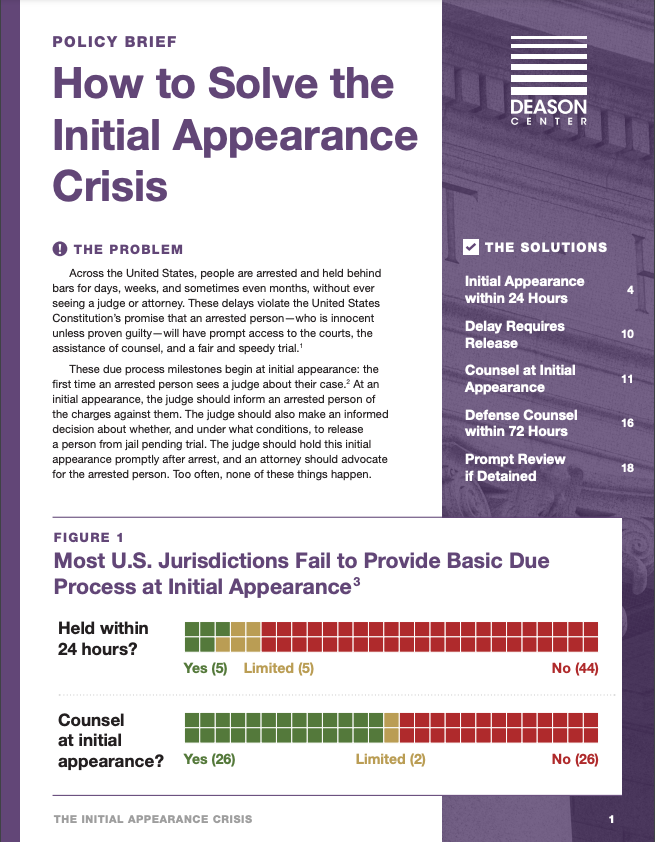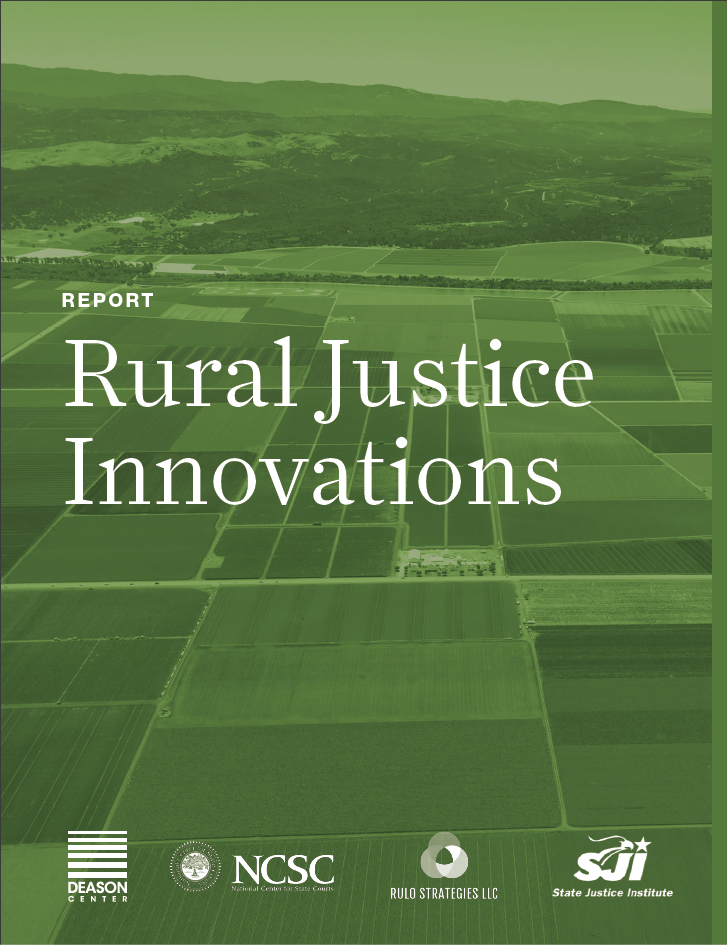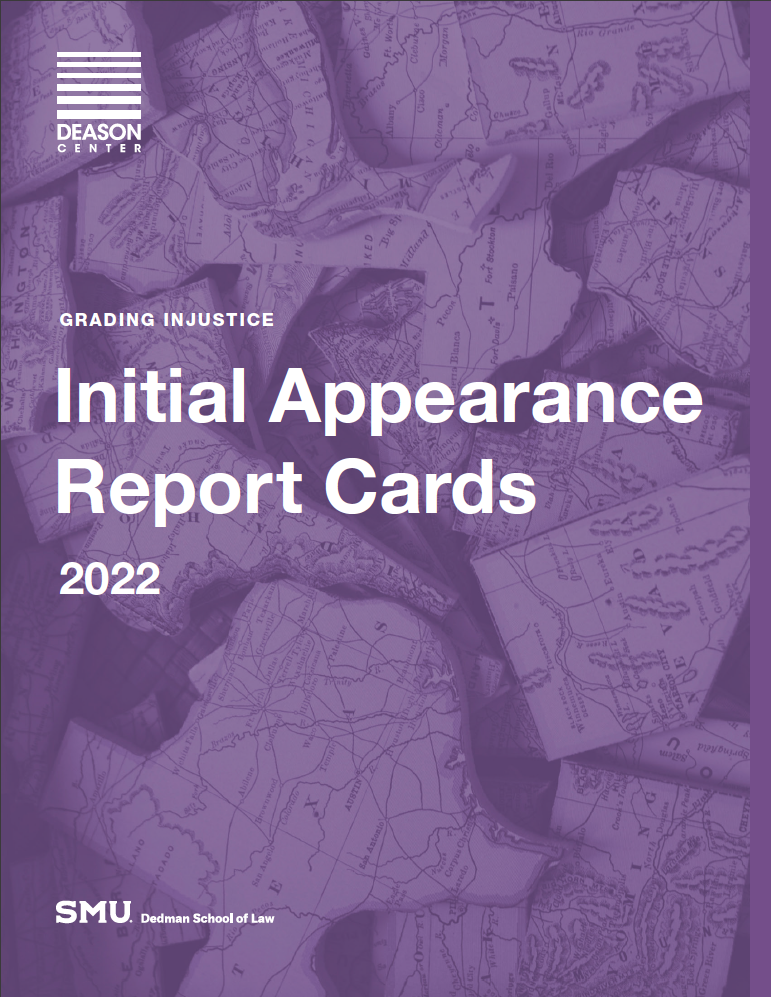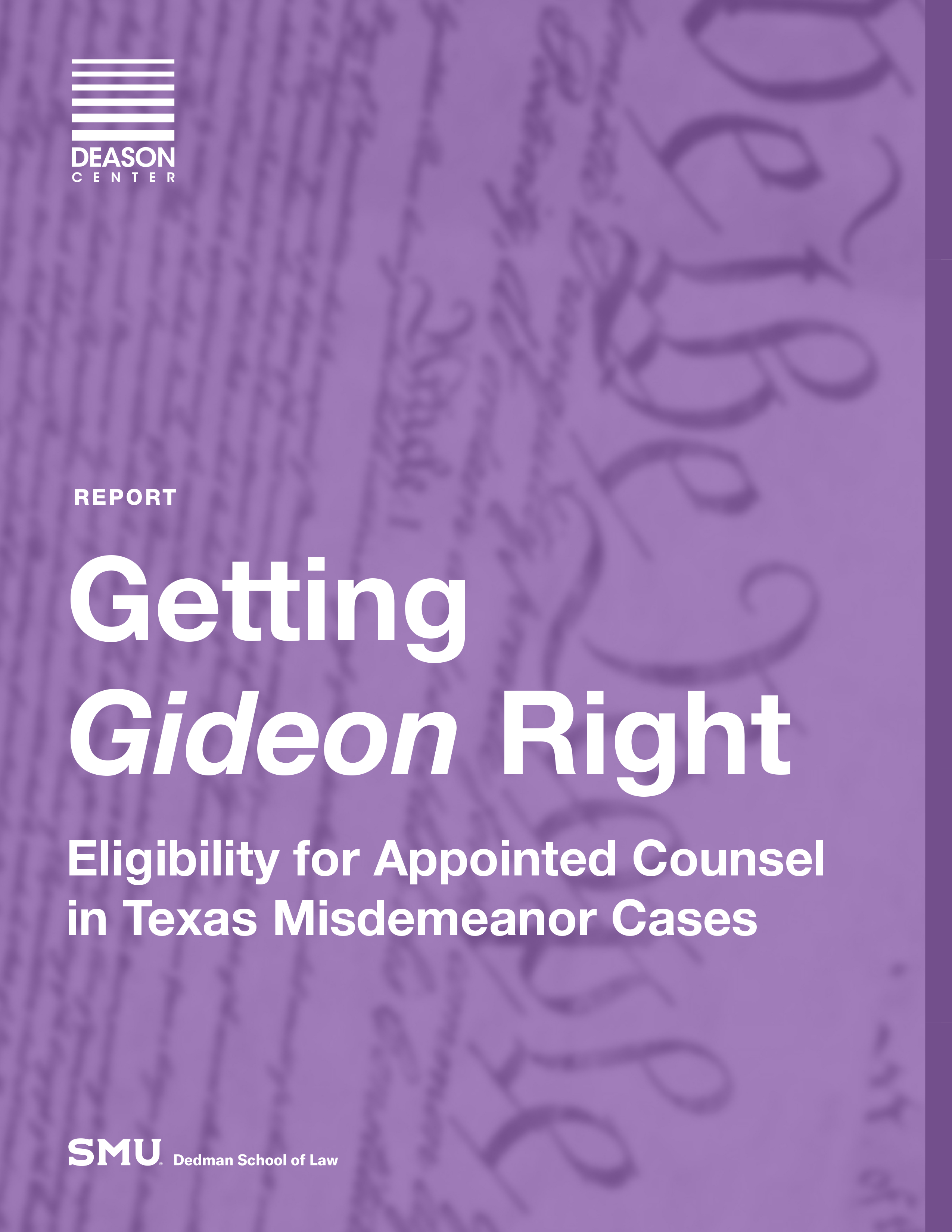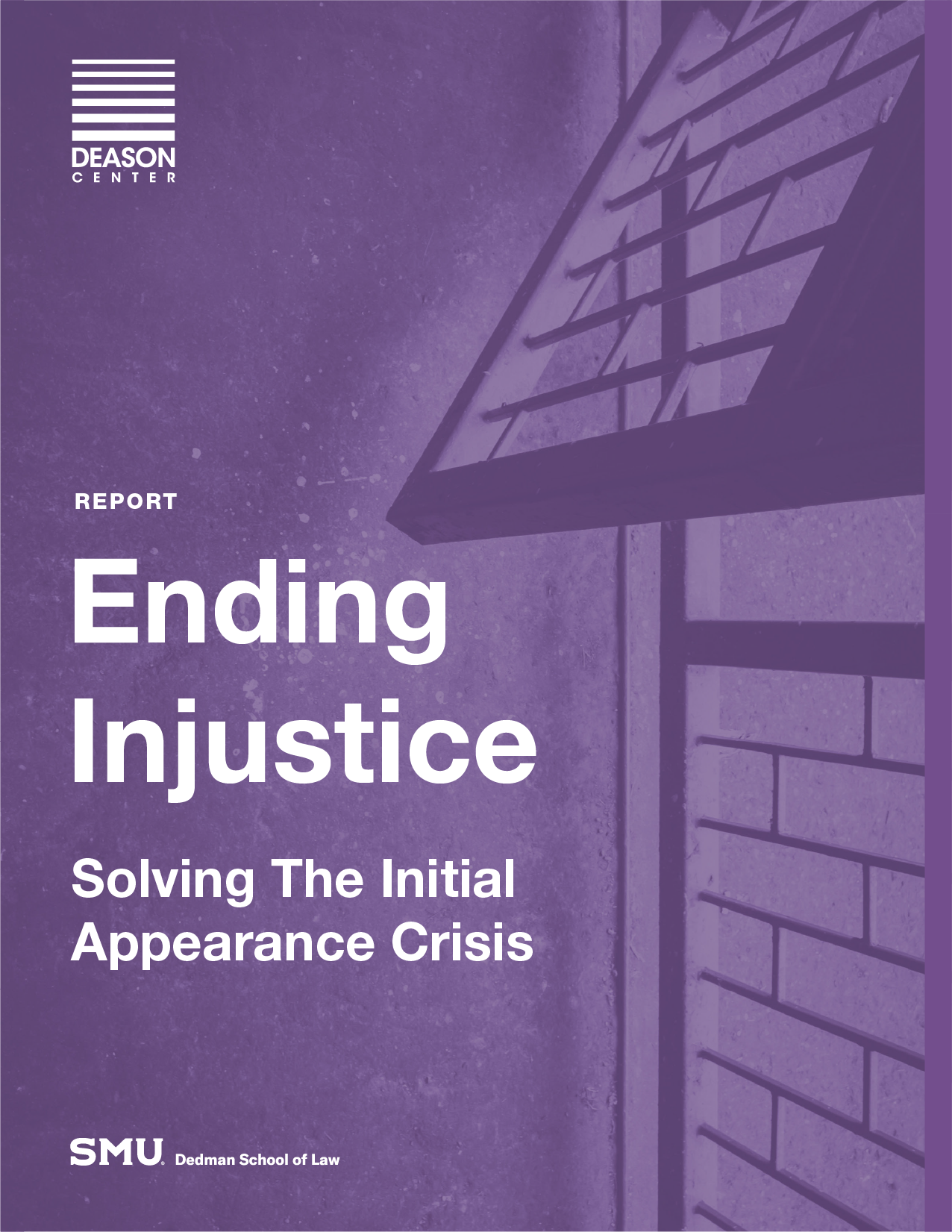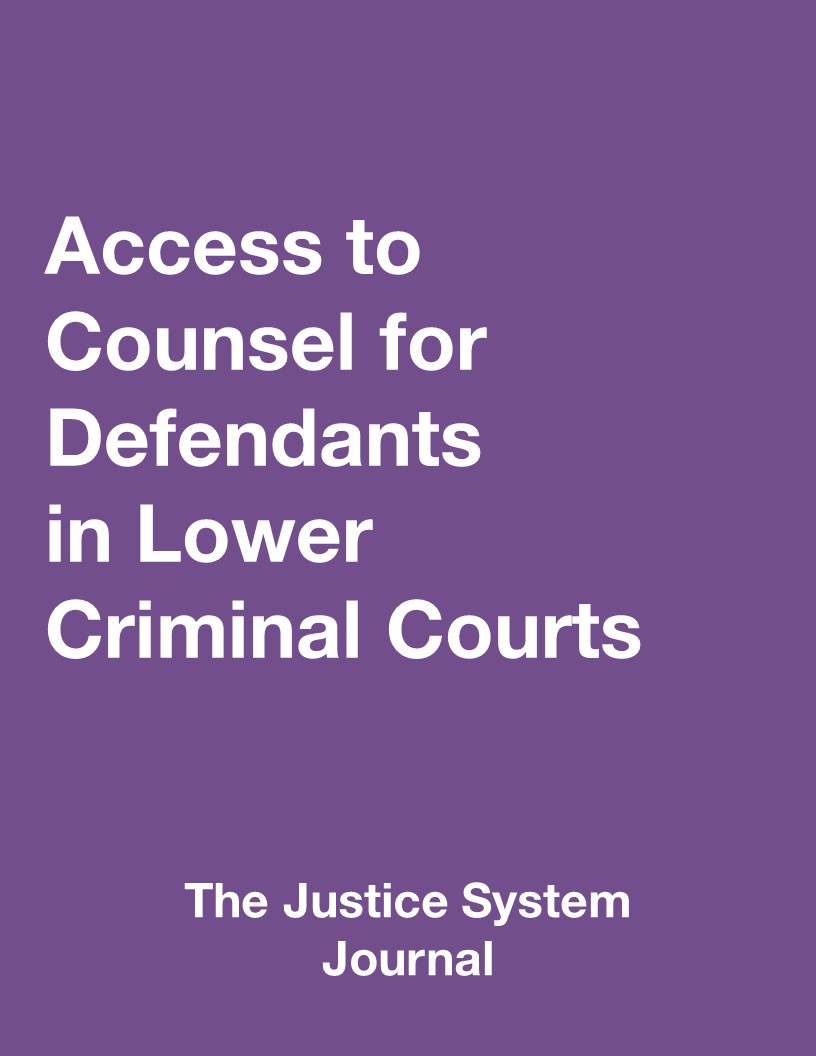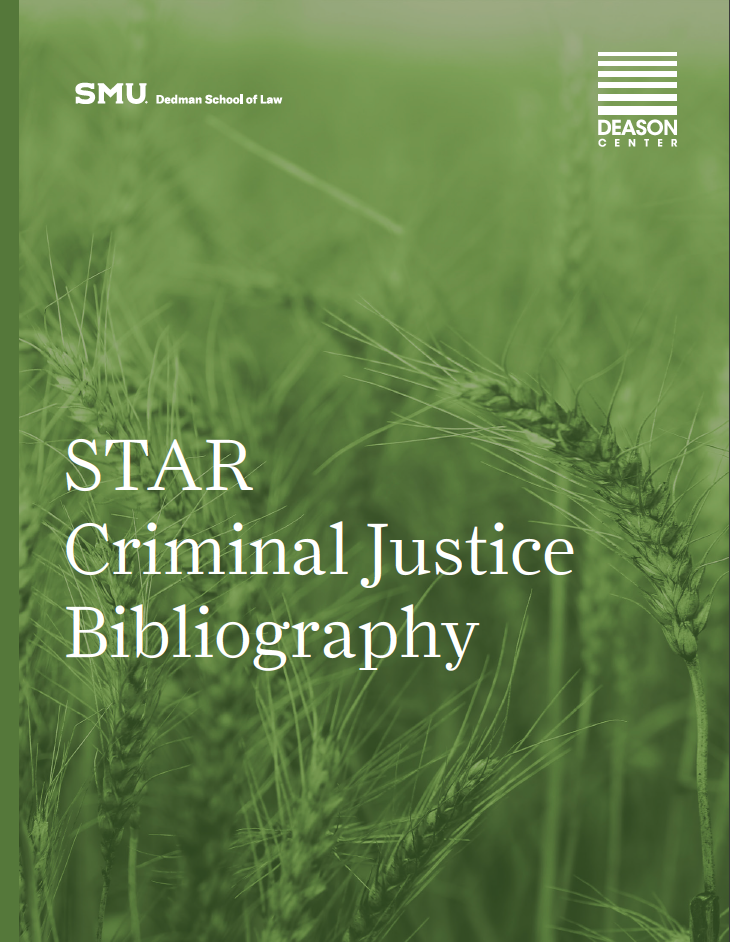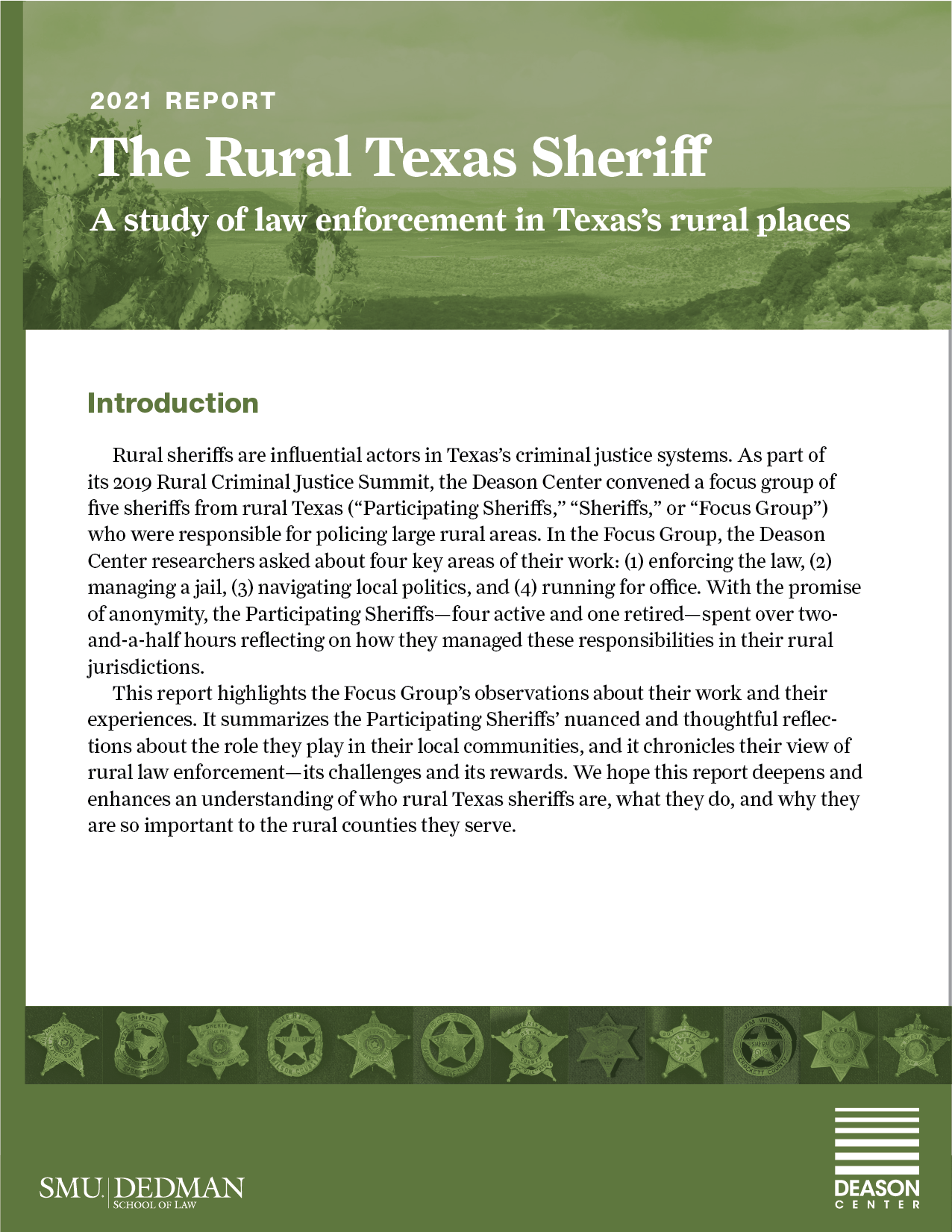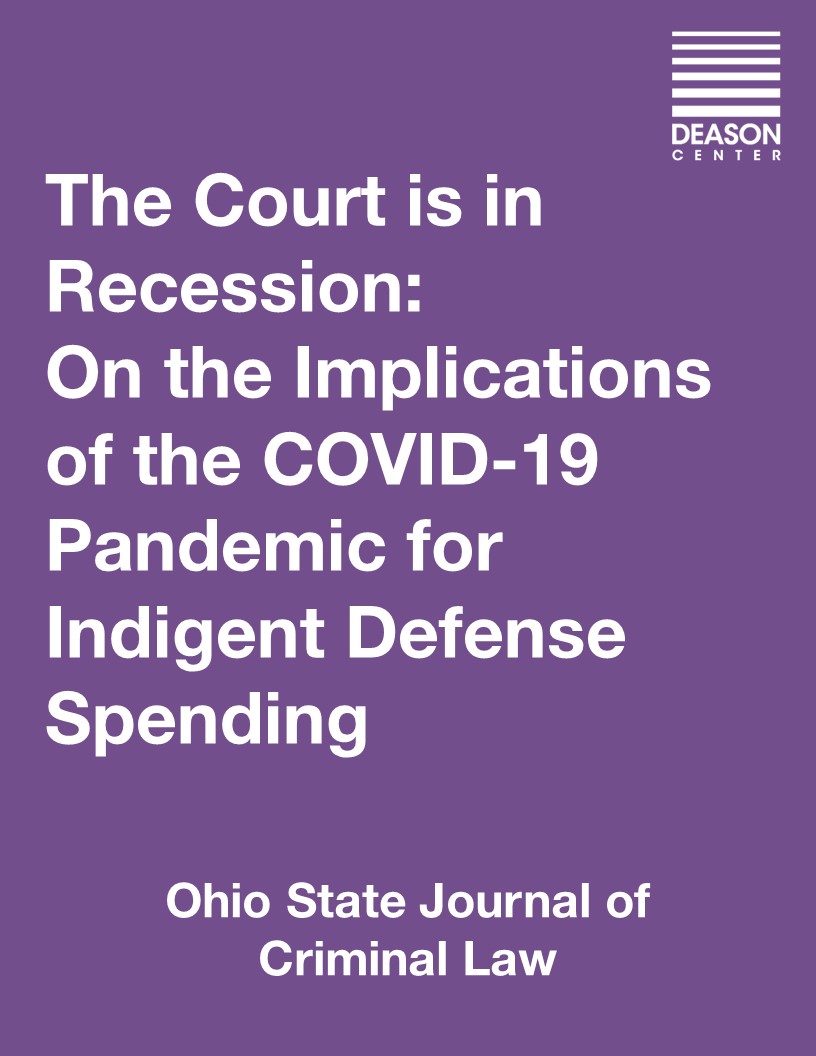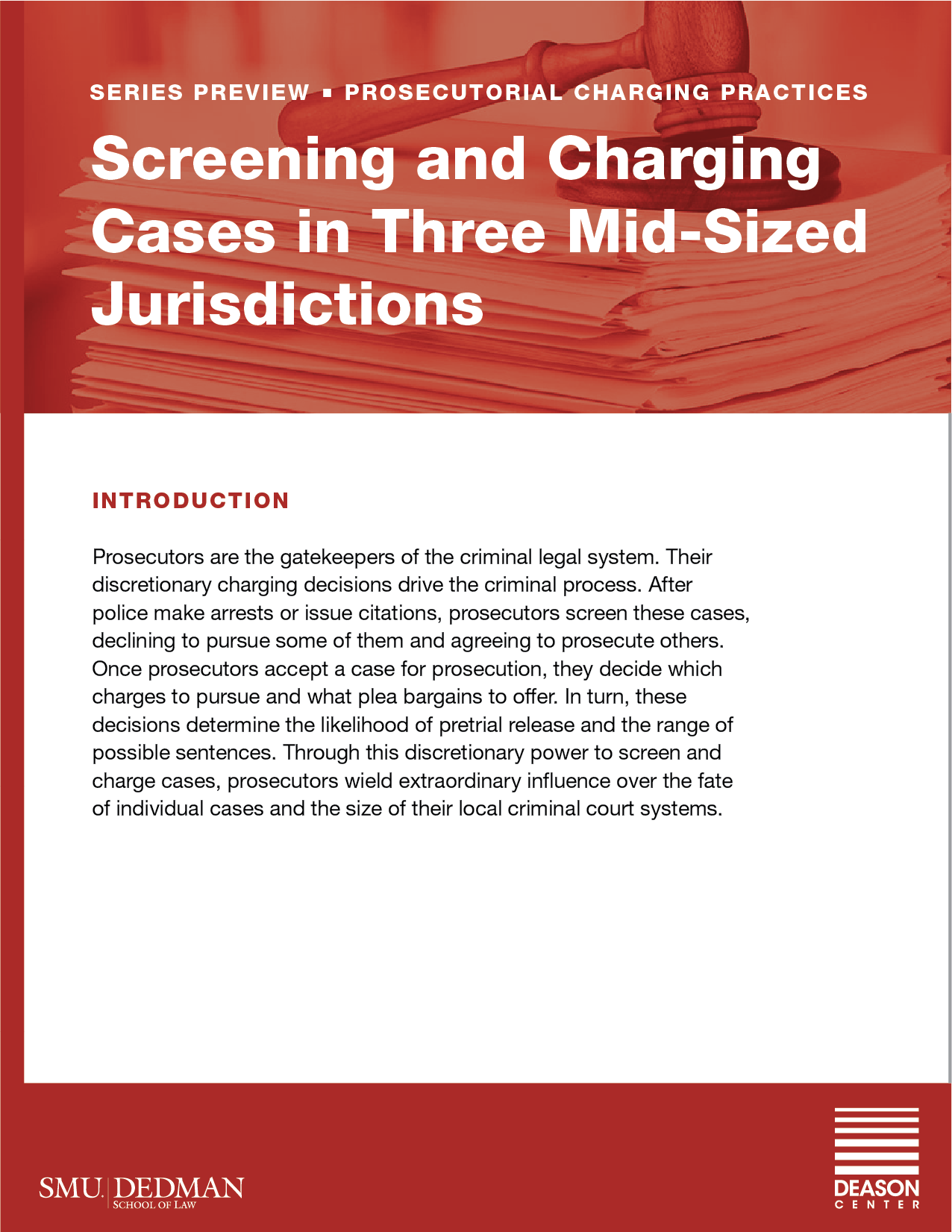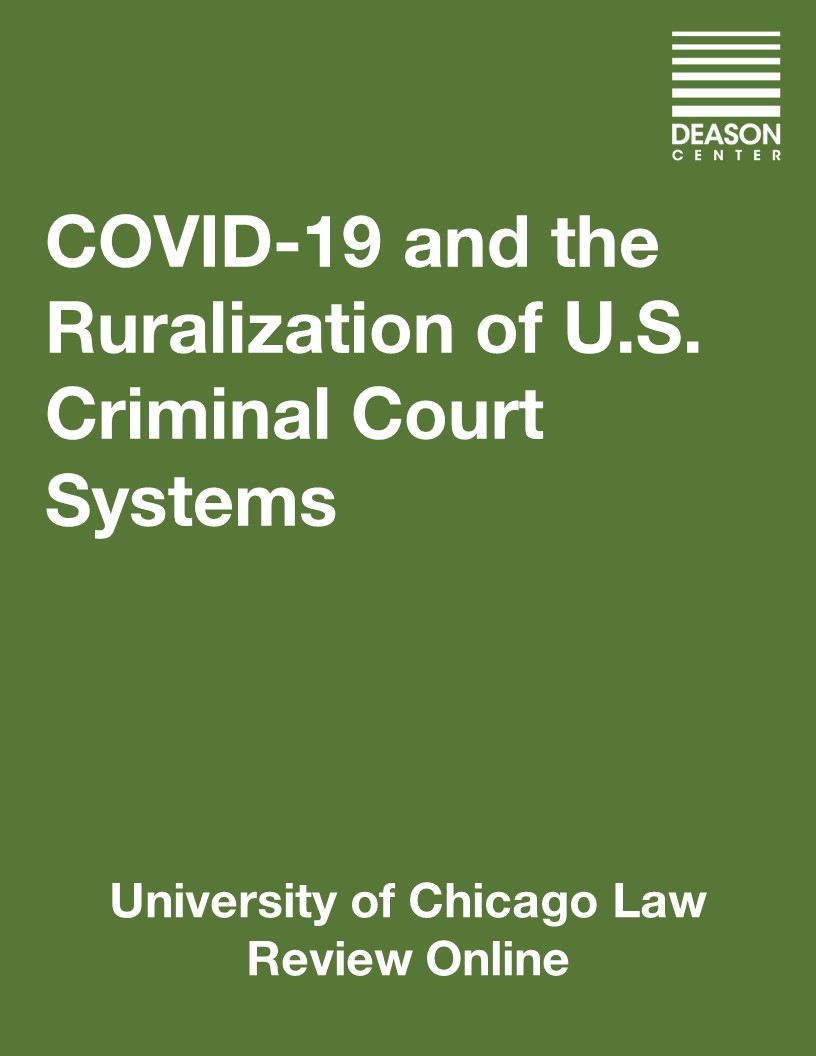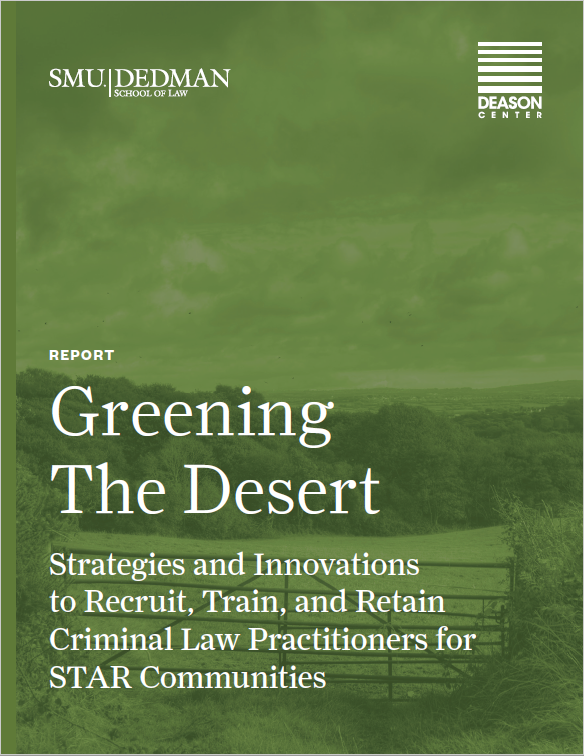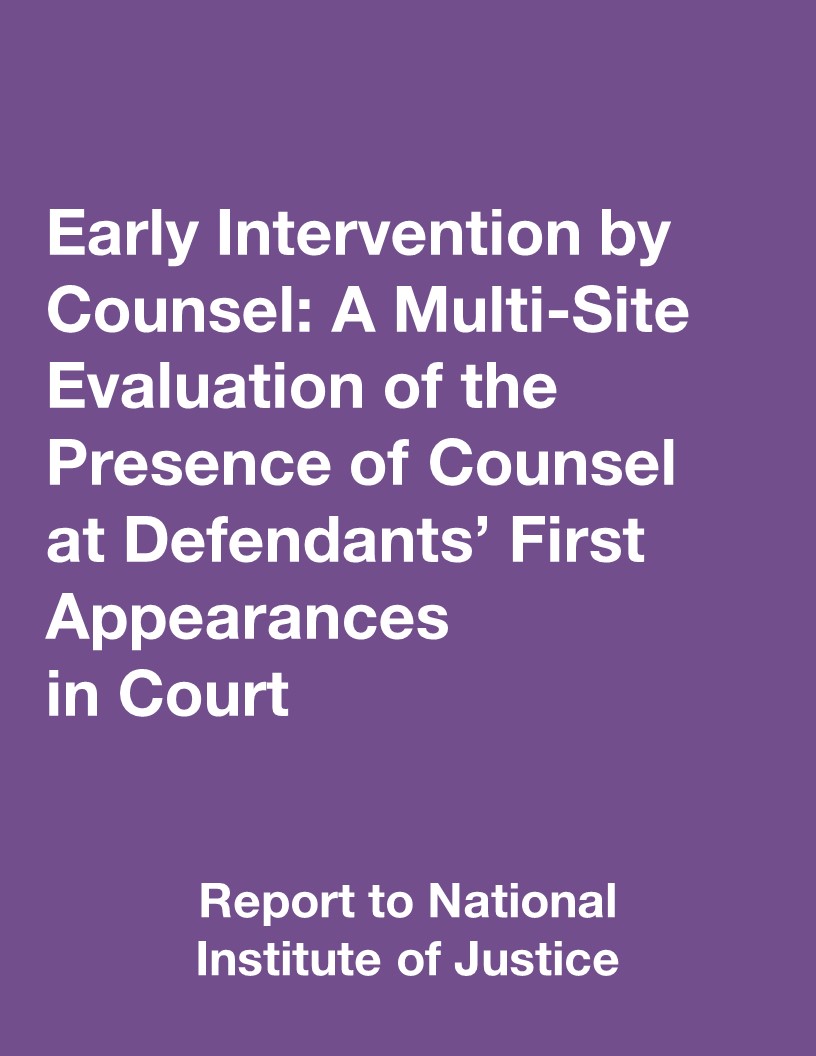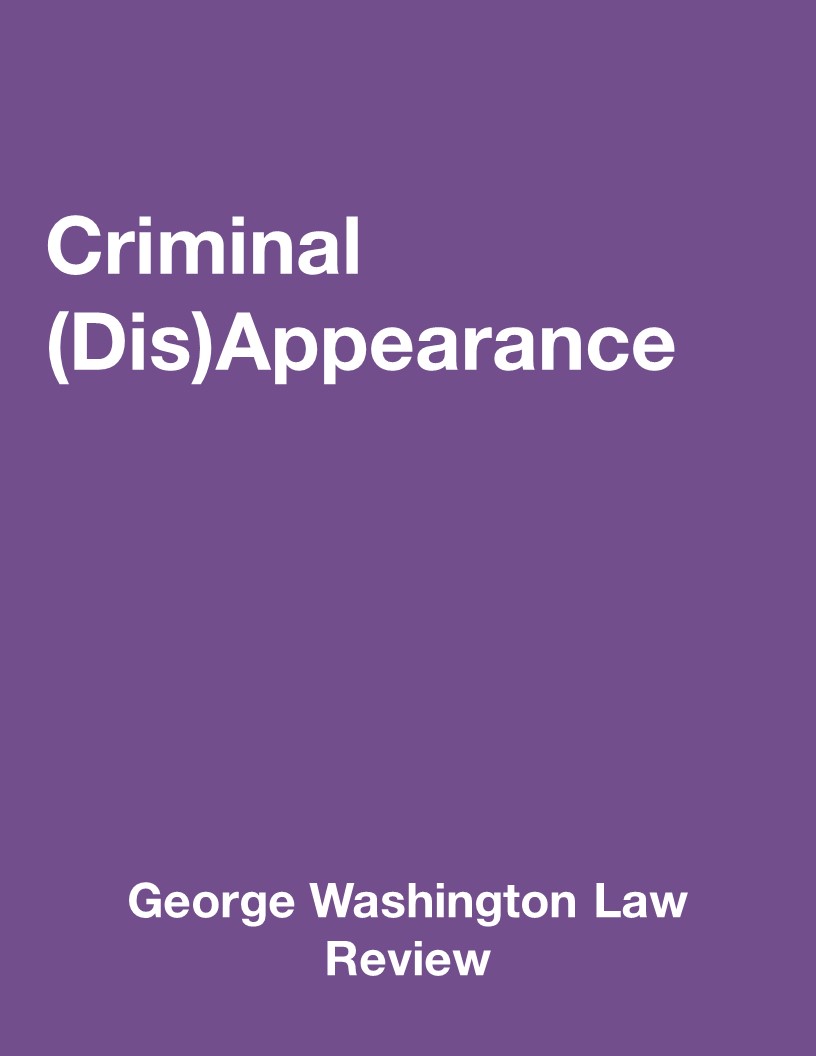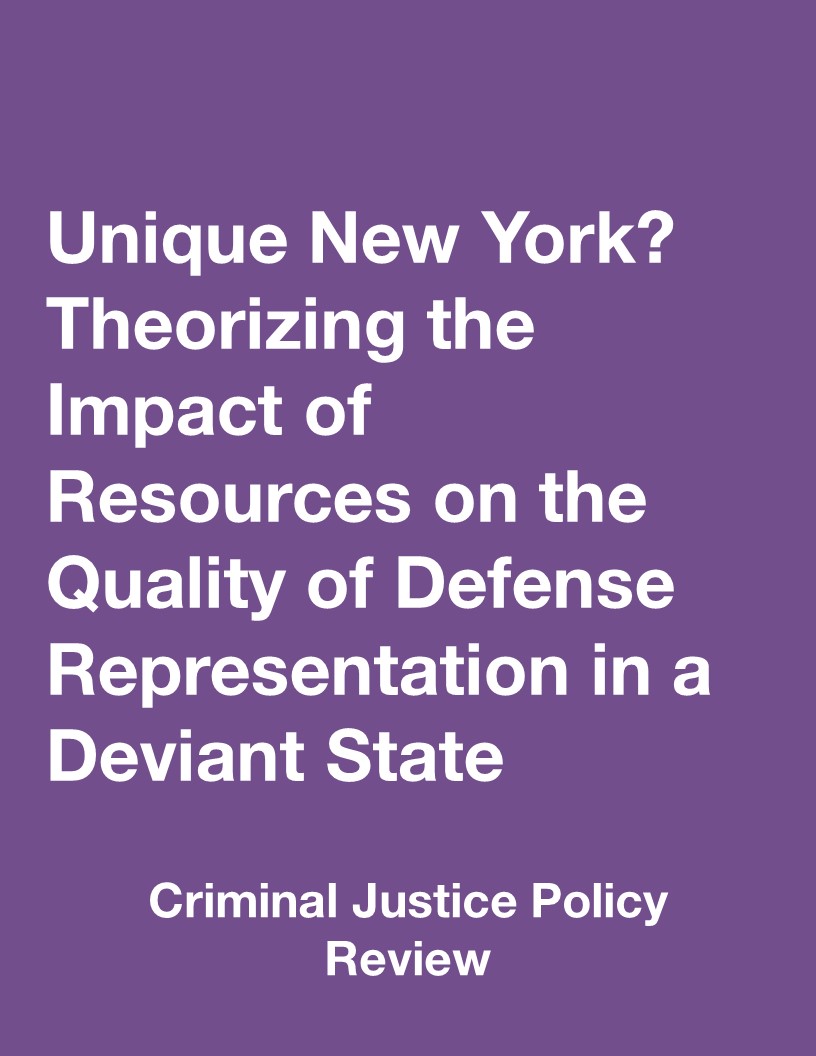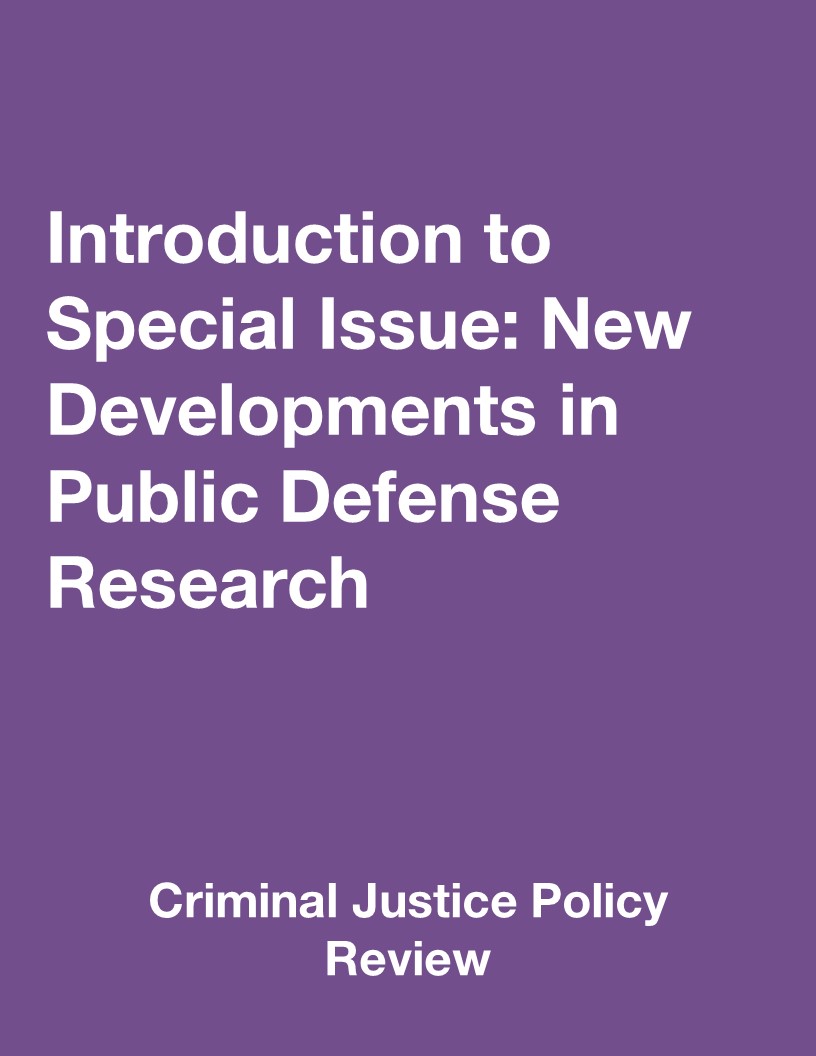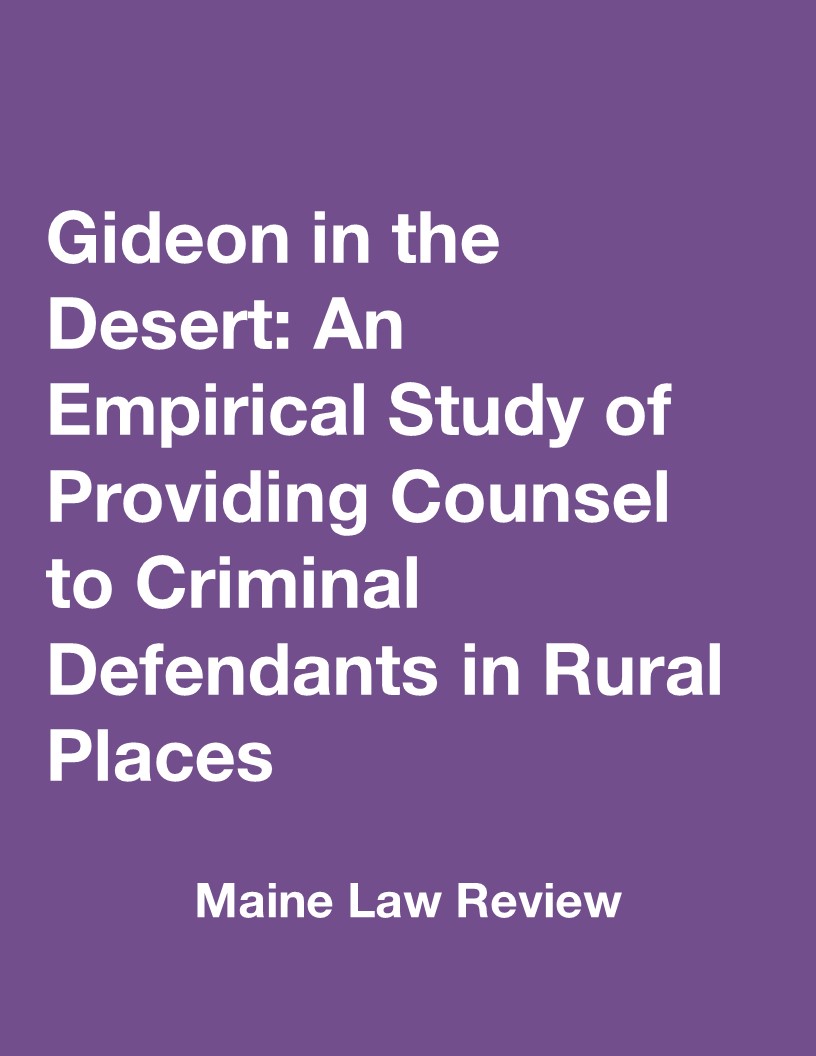Publication Library
Policy Brief: How to Solve the Initial Appearance Crisis
Initial appearance delays violate the United States Constitution’s promise that an arrested person—who is innocent unless proven guilty—will have prompt access to the courts, the assistance of counsel, and a fair and speedy trial.
These due process milestones begin at initial appearance: the first time an arrested person sees a judge about their case. At an initial appearance, the judge should inform an arrested person of the charges against them. The judge should also make an informed decision about whether, and under what conditions, to release a person from jail pending trial. The judge should hold this initial appearance promptly after arrest, and an attorney should advocate for the arrested person. Too often, none of these things happen.
This policy brief outlines five best legal practices for jurisdictions to honor the United States Constitution and protect the rights of all arrested people. In addition to detailing each best practice, the publication outlines strategies for success that jurisdictions can use when implementing these vital policies.
Brink, M. N., Metzger, P. R., & Yu, J., How to Solve the Initial Appearance Crisis, Deason Criminal Justice Reform Center (May 2023).
Rural Justice Innovations
Rural criminal justice matters, and rural criminal justice innovations must be studied and celebrated. The Deason Criminal Justice Reform Center is pleased to join Rulo Strategies, LLC, and the National Center for State Courts, in publishing a report that highlights innovations in rural criminal legal systems across the United States. Like their urban and suburban peers, rural communities are concerned about criminal justice reform: they want safe streets, fair process, and equal justice. But for too long, funders, researchers, and justice innovators have focused on urban justice systems, largely ignoring the rural criminal justice experience. And when rural systems are studied, the attention usually falls on their deficits—not their strengths. But the smaller scale of rural justice systems means that they can be flexible and nimble justice innovators. As this report demonstrates, there are countless lessons to be learned from rural stakeholders in the criminal system.
Greening Criminal Legal Deserts in Rural Texas
Texas’ rural communities urgently need more prosecutors and public defense providers. On average, Texas’ most urban areas have 28 lawyers for every 100 criminal cases, but rural areas only have five. Many rural prosecutor’s offices cannot recruit and retain enough staff. The Constitution’s promise of equal justice for all remains unfulfilled. Rural Texans charged with misdemeanors are four times less likely to have a lawyer than urban defendants. In 2021, only 403 rural Texas lawyers accepted an appointment to represent an adult criminal defendant. In 65 rural counties, no lawyer accepted an appointment. And the problem is getting worse. Since 2015, Texas has lost one-quarter of its rural defense lawyers. Many of them retired and have not been replaced.
This policy brief outlines three solutions to recruit more criminal lawyers to serve rural Texans: Educational pipelines, financial incentives, and rural public defender offices. Rural Texans deserve the same constitutional protections as their urban and suburban counterparts. With strong recruitment strategies, targeted incentive programs, and new rural defender offices, Texas can green its criminal law deserts.
Metzger, P. R., Buetow, C., Meeks, K., Skiles, B., & Yu, J., Greening Criminal Legal Deserts in Rural Texas, Deason Criminal Justice Reform Center (October 2022)
Grading Injustice: Initial Appearance Report Cards
Arrested people across the United States often wait in jail for days, weeks, or even months before seeing a judge or meeting an attorney. In November 2021, the Deason Criminal Justice Reform Center published Ending Injustice: Solving the Initial Appearance Crisis, a comprehensive report about this ongoing crisis in pre-trial due process. That report described the devastating consequences of delayed and uncounseled initial appearances.
Now, these Initial Appearance Report Cards offer a closer look at the laws governing post-arrest procedures in each U.S. state, the District of Columbia, Guam, Puerto Rico, and the U.S. Virgin Islands. While the Deason Center’s previous report provided an overview of the initial appearance crisis nationwide, the Initial Appearance Report Cards are a rigorous assessment of the laws in almost every jurisdiction in the country. These report cards reveal enormous gaps in the legal protections accorded to people accused of crimes, illuminating both the scope of the initial appearance crisis and our urgent need to solve it.
Brink, M. N., Yu, J., & Metzger, P. R., Grading Injustice: Initial Appearance Report Cards, Deason Criminal Justice Reform Center (September 2022).
Getting Gideon Right
Fewer, Not Fairer
In 2019, police across Dallas County asked the District Attorney to prosecute fewer marijuana cases than the year before. This report examines whether the racial disparity in those cases improved at the same time. Fewer, Not Fairer shows that while the number of referrals declined, police were still more likely to refer a Black person for marijuana prosecution than a non-Black person. However, some cities achieved more fairness when their police departments almost entirely stopped requesting marijuana prosecutions altogether.
Smiegocki, V. M., Metzger, P. R., & Davies, A. L. B., Fewer, Not Fairer, The DALLAS Project, Deason Criminal Justice Reform Center (November 2021).Report: Ending Injustice: Solving the Initial Appearance Crisis
Most Americans expect that if they are arrested, they will quickly appear before a judge, learn about the charges, and have an attorney assigned to defend them. The reality is vastly different. After arrest, a person can wait in jail for days, weeks, or even months before seeing a judge or meeting an attorney. This report chronicles the resulting initial appearance crisis and highlights its devastating consequences. More importantly, it provides policymakers and advocates with actionable recommendations.
Metzger, P., Hoeffel, J., Meeks, K., & Sidi, S., Ending Injustice: Solving the Initial Appearance Crisis, Deason Criminal Justice Reform Center (October 2021).
Article: Access to Counsel for Defendants in Lower Criminal Courts
Criminal defendants unable to afford an attorney are entitled to one for free in the United States, but how and when they obtain access to that lawyer is another question. We examine judicial attitudes and behavior in granting access to counsel in areas where logistics are particularly forbidding. Based on survey responses from 1,091 magistrate judges presiding in lower criminal courts in suburban and rural jurisdictions in upstate New York, we describe both the procedures used to determine defendants’ financial eligibility for free counsel, and the logistical challenges that surround securing the physical presence of a lawyer at the first appearance in court. We find that judges strongly favor counsel’s presence in order to maintain courtroom efficiency, and sometimes depart from strict interpretation of financial eligibility guidelines to ensure representation. We introduce
the concept of the “procedurally precautious judge” to describe the way these respondents carefully preserve the appearance of integrity in court operations even while availability of counsel for defendants is limited.
Alyssa M. Clark, Andrew L. B. Davies, and Karise M. Curtis, Access to Counsel for Defendants in Lower Criminal Courts, Justice System Journal, DOI (2021)
Budding Change
Budding Change explores what happened when Dallas County District Attorney John Creuzot (DA Creuzot) radically changed his office’s policies about the prosecution of first-time misdemeanor marijuana cases. The report concludes that DA Creuzot’s 2019 policies were associated with significant reductions in police enforcement of marijuana misdemeanor laws. As a result, marijuana screening caseloads within the District Attorney’s Office declined substantially. Budding Change shows that prosecutorial policies can have a profound impact on policing behaviors.
Metzger, P., Smiegocki, V., & Meeks, K., Budding Change: Marijuana Prosecution Policies and Police Practices in Dallas County, 2019, Deason Criminal Justice Reform Center (July 2021).
The ABCs of Racial Disparity
Data show that Black and White people use marijuana at roughly equal rates. Yet in 2018, in six of Dallas County's biggest cities, Black people were vastly overrepresented in the enforcement of low-level drug crimes. With a look at enforcement trends before the election of District Attorney John Creuzot, this study launches a series of reports about how his reforms have impacted Dallas County.
Metzger, P., Meeks, K., Smiegocki, V., Brown, K., & Davies, A. L. B., The ABCs of Racial Disparity: Enforcement of Low-Level Drug Crimes in Dallas County in 2018, Deason Criminal Justice Reform Center (May 2021).
Resource: STAR Criminal Justice Bibliography
The STAR Criminal Justice Bibliography is a rich resource for STAR practitioners, policymakers, and communities. Updated annually, the bibliography provides a helpful summary of scholarship that addresses STAR criminal legal systems. The bibliography emphasizes research that can be readily translated into actionable reform by STAR lawyers, communities, and justice-impacted individuals. Topics of special interest include public defense innovations, technological adaptations, and juvenile justice and reentry programs that are tailored to the unique characteristics of STAR systems.
STAR Criminal Justice Bibliography, Deason Criminal Justice Reform Center (June 2022).
Report: The Rural Texas Sheriff
The Rural Texas Sheriff reports on a focus group conducted in conjunction with the Center's 2019 Rural Criminal Justice Summit. The report places rural Texas sheriffs and their agencies in a national context. It also offers insight into the focus group's perceptions of rural law enforcement and jail management. With first-hand accounts of these sheriffs’ experiences, the report offers a compelling look at the personal and professional lives of Texas’ rural sheriffs.
The Rural Texas Sheriff, Deason Criminal Justice Reform Center (April 2021).
Article: The Court is in Recession: On the Implications of the COVID-19 Pandemic for Indigent Defense Spending
How will the COVID-19 pandemic impact indigent defense budgets in the United States? During times of fiscal stress, redistributive policies—policies that use taxpayer funds to support people who pay little or no taxes—are particularly susceptible to spending cuts. However, during the Great Recession of 2007-2009, Texas' indigent defense spending was generally stable, even in the hardest-hit counties.
Andrew Davies, Victoria Smiegocki, and Hannah Hall, The Court is in Recession: On the Implications of the COVID-19 Pandemic for Indigent Defense Spending, __Ohio St. J. Crim.Law __ (2021) (forthcoming).
Report: Series Preview: Screening and Charging Practices in Three Mid-Sized Jurisdictions
Understanding how prosecutors make their screening and charging decisions is essential to criminal legal reform. This preview report is the first in a series of publications that explores the screening and charging practices of prosecutors in three mid-sized jurisdictions. Through an innovative mixed-methods empirical study, the series provides a holistic account of prosecutors’ charging practices.
Series Preview: Screening and Charging Practices in Three Mid-Sized Jurisdictions, Deason Criminal Justice Reform Center (February 2021).
Op-Ed: Evidence-Based Paths towards Criminal Justice Reform
As recent events at the Capitol make clear, criminal legal reform is a moral and civic imperative for the new Biden administration. President Joe Biden ran, in part, on a promise of reducing the United States’ outsized reliance on incarceration, correctional supervision and fines and fees and committed himself to addressing systemic racism in the criminal system. Recent events have only increased the urgency for smart, compassionate criminal legal reforms that are based on empirical evidence, rather than on instinct or past practice....
Jon Gould and Pamela R. Metzger, Evidence-based Paths towards Criminal Justice Reform, The Hill, Feb. 26, 2021.
Essay: COVID-19 and the Ruralization of U.S. Criminal Legal Systems
The COVID-19 pandemic is imposing typically rural practice constraints on the United States’ urban and suburban criminal court systems. This “ruralization” of criminal practice offers a window into the challenges and opportunities that inhere in rural systems. But for decades, lawmakers, researchers, reformers, and philanthropists have overlooked, undertheorized, and underfunded rural criminal legal systems—and have done so at great peril. Rural systems have decades of experience navigating (geographically) distanced criminal practice. By ignoring these rural practice adaptations, we have missed critical opportunities to learn about successful adaptations to distance-constrained criminal practice.
Pamela R. Metzger and Greg Guggenmos, COVID-19 and the Ruralization of U.S. Criminal Legal Systems, U. Chi. L. Rev. Online (Nov. 2020).
One-Pager: Greening the Desert
Greening the Desert brings a criminal justice lens to the phenomenon of STAR legal deserts—vast areas with few, if any, practicing attorneys. This one-pager highlights key strategies to green these criminal law deserts. The full Greening the Desert report offers detailed examples and case studies that describe successful implementation of strategies to recruit, train, and retain STAR justice practitioners. An accompanying webinar explores the national landscape and chronicles how two STAR criminal lawyers found their way to rural practice.
Greening the Desert (One-Pager), Deason Criminal Justice Reform Center (September 2020).
Report: Greening the Desert
Greening the Desert brings a criminal justice lens to the phenomenon of legal deserts in STAR communities—vast areas with few, if any, practicing attorneys. The report explores STAR criminal justice communities and describes strategies and initiatives to green these criminal law deserts. Using case studies, the report offers concrete examples of successful innovations. It also includes cautionary notes about risks that may arise with the implementation of strategies to recruit, train, and retain STAR practitioners. A companion webinar explores the national landscape and chronicles how two STAR criminal lawyers found their way to rural practice.
Metzger, P., Meeks, K., & Pishko, J., Greening the Desert: Strategies and Innovations to Recruit, Train, and Retain Criminal Law Practitioners for STAR Communities, Deason Criminal Justice Reform Center (Sept. 2020).
Op-Ed: What This Law Prof Has Learned about Rural Justice
I have a confession. Until 2016, I thought criminal justice reform meant urban criminal justice reform. I’d been to rural jurisdictions and worked in a rural prison.
But rural justice challenges seemed like brutal realities, not policy-driven injustices. One day in rural Louisiana, I learned that I was wrong....
Pamela R. Metzger, What This Law Prof Has Learned about Rural Justice, ABA Journal, Feb. 6, 2020.
Article: Early Intervention by Counsel: A Multi-Site Evaluation of the Presence of Counsel at Defendants’ First Appearances in Court
This is the final report of an NIJ-funded evaluation of the impact of counsel at first appearance (CAFA) in Upstate New York. The evaluation demonstrates that CAFA changed bail practices in several jurisdictions. Before the CAFA program, criminal defendants were unrepresented when their bail was set. After CAFA, the frequency with which defendants were required to post bail declined, as did the amount of bail that was demanded. Ancillary observations suggest CAFA may also increase access to counsel, expedite case dispositions, and produce cost savings.
Alissa Worden, Andrew Davies, Reveka Shteynberg, and Kirstin Morgan, Early Intervention by Counsel: A Multi-Site Evaluation of the Presence of Counsel at Defendants’ First Appearances in Court, National Institute of Justice (April 2020).
Article: Criminal (Dis)Appearance
Amid the national conversation about criminal legal reform, this article is the first scholarly work to address the initial appearance crisis. Criminal (Dis)Appearance describes an epidemic of detention-without-process and explores the legal landscape that produced it. The article describes the Supreme Court's commitment to a narrow Fourth Amendment jurisprudence and critiques the Court's rejection of early-stage criminal due process rights. The authors explain how substantive and procedural due process establish the right to a prompt and thorough initial appearance.
Pamela R. Metzger and Janet C. Hoeffel, Criminal (Dis)Appearance, 88 Geo. Wash. L. Rev. 392 (2020).
Article: Unique New York? Theorizing the Impact of Resources on the Quality of Defense Representation in a Deviant State
This article describes forthcoming reforms to indigent defense systems in the state of New York and interviews state leaders about their expectations of those reforms. Conceptualizing defense service quality in terms of “public value,” we offer new theoretical and empirical strategies to explore how increasing resources impact the quality of defense services. The article lays the groundwork for an assessment of the reforms' impact and identifies key metrics to track. This is the first publication of the Deason Center’s Gauging Improvement in Defense Efforts and Outcomes in New York (GIDEON) project.
Andrew Davies, Giza Lopes, and Alyssa Clark, Unique New York? Theorizing the Impact of Resources on the Quality of Defense Representation in a Deviant State, 31(6) Criminal Justice Policy Review 962 (2020).
Foreword: Introduction to Special Issue: New Developments in Public Defense Research
This is the foreword to a collection of empirical research about public defense, published under the auspices of the Indigent Defense Research Association (IDRA). Two overarching themes emerge. The first theme, “System Interventions: Evaluating Programs and Identifying Opportunities,” includes three studies of innovative policies and practices. The second theme, “Understanding Decision Makers,” includes four papers drawing on qualitative data. As a collection, these papers bridge gaps between theory and practice, offer new insight into public defense as a critical component of criminal legal systems, and identify new avenues for future research.
Janet Moore and Andrew Davies, Introduction to Special Issue: New Developments in Public Defense Research, 31(6) Criminal Justice Policy Review 791 (2020).
Article: The Impact of Counsel at First Appearance on Pretrial Release in Felony Arraignments: The Case of Rural Jurisdictions
This article assesses the impact of counsel at first appearance (CAFA) on bail outcomes in two rural upstate New York counties. The authors investigate three hypotheses about what occurs a defendant has counsel at their first appearances in court: (1) judges are more inclined to release a defendant on personal recognizance or under supervision, and (2) judges impose lower bail amounts, and (3) as a consequence, defendants spend less time detained before disposition. The authors find mixed support for these hypotheses, although some evidence that CAFA produces the expected outcomes. The authors conclude that the implementation of CAFA programs may be tempered by courthouse cultures and urge that future research on court reform include rural jurisdictions.
Alissa Worden, Reveka Shteynberg, Kirstin Morgan, and Andrew Davies, The Impact of Counsel at First Appearance on Pretrial Release in Felony Arraignments: The Case of Rural Jurisdictions, 31(6) Criminal Justice Policy Review 833 (2020).Op-Ed: Rural Justice Systems Low on Pretrial Resources Leave Some to Languish, Die
Trequelle Vann-Marcouex was just 18 years old when he hanged himself, after being trapped in the Wood County, Wisconsin jail, with no attorney to defend him.
Just days earlier, Vann-Marcouex appeared in court for the first time after his arrest. A teenager standing alone in his baggy jumpsuit, Vann-Marcouex asked the judge for help. He faced robbery charges and more than 60 years in prison.
He thought he would get a public defender and a shot at the equal justice he’d heard about in high school civics class…
Pamela R. Metzger, Rural Justice Systems Low on Pretrial Resources Leave Some to Languish, Die, USA Today, Dec. 13, 2019.
Op-Ed: Why Rural Americans Struggle for Equal Justice
Drive from Amarillo, one of the biggest cities in West Texas, to Armstrong County, Texas, and you will enter a different world. Armstrong County, with fewer than than 2,000 people, is largely agricultural and, like many rural counties, substantially poorer than its urban neighbor, with a small local budget to match.
And, a report from the Sixth Amendment Center issued this month points out that the very sparseness of Armstrong County means that people arrested for crimes tend to have a very different experience with the criminal justice system than their urban Amarillo neighbors…
Pamela R. Metzger, Why Rural Americans Struggle for Equal Justice, Dallas Morning News, Nov. 24, 2019.
Op-Ed: Equal Justice Depends on Properly Funding Public Defenders
Sen. Kamala Harris (D-Calif.) recently introduced the Equal Defense Act, which would boost resources for public defenders across the country. It offers a $250 million grant program on top of case limits for public defenders.
A longtime prosecutor, Harris understands that a fully functional and adequately funded public defender’s office is essential to the pursuit of justice and for ensuring safer communities and families...
Pamela R. Metzger, Equal Justice Depends on Properly Funding Public Defenders, The Hill, May 22, 2019.
Article: Gideon in the Desert: An Empirical Study of Providing Counsel to Criminal Defendants in Rural Places
The Sixth Amendment right to counsel is a continuing challenge in rural areas. This Article describes an exploratory analysis of Texas data about rural and urban access to counsel, including rules governing the eligibility for appointed counsel services and the appointment-of-counsel rate. The authors report that appointment-of-counsel rates were significantly lower in rural counties. Low lawyer populations were associated with especially low levels of access to counsel. In contrast, the presence of an organized defense provider was associated with significantly higher rates of access to counsel.
Andrew Davies and Alyssa Clark, Gideon in the Desert: An Empirical Study of Providing Counsel to Criminal Defendants in Rural Places, 71 Me. L. Rev. 245 (2019).


